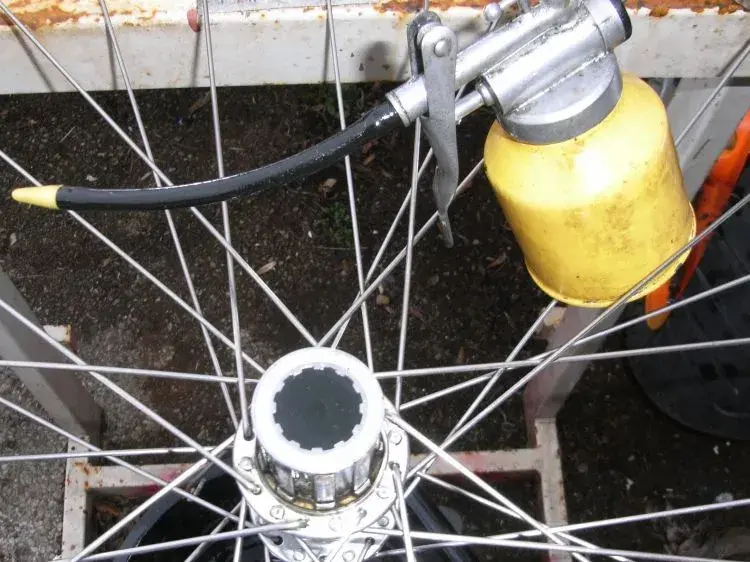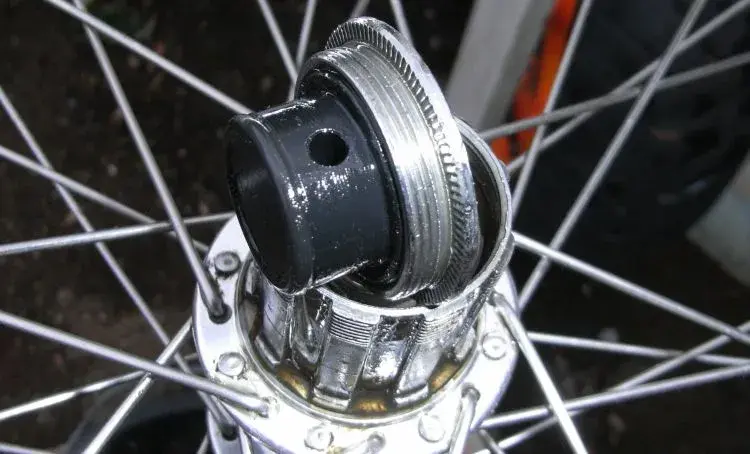On most vintage Shimano hubs, the freehub body is pretty easily removed.
Remove the cassette, undo the non-drive side lockwasher and unscrew that cone. Extract the axle and non drive bearings, then extract the drive side bearings. Use a 10mm allen wrench to unscrew the hollow bolt that holds on the freehub body. Freehub body is now in your hand.
Better freehub bodies have a rubber lip seal on the rear (hub) side of the body. Use a dental pick or similar to prise it out carefully (don't damage the seal lips). Cheaper models have no seal.
I clean freehub bodies by syringing petrol (Coleman Fuel) or similar into the gap where the seal was (or wasn't, if cheaper). This will dissolve the old grease and help flush out the debris causing the crunching. Keep flushing and spinning until things are smooth and clean.
If you feel really adventurous, you _can_ disassemble the freehub body entirely... Gently pry out the seal plate on from the hub bearing end of the freehub body (note its position first, so you can replace it correctly), and you'll see that the hub bearing cup has 2 slots in its top.... You can fabricate a tool from bar stock, and unscrew it. Best to count the balls in the rear race before you do, however, so you can get it all back together correctly.
When the cup is unscrewed, you'll see it's also the cone for the outboard freehub bearings. Extract the many tiny balls from the outboard end (magnet probe), then lift off the outter shell of the freehub body. The inboard race balls will drop onto the table, or may stick in the grease... Don't loose'em. I do final disassembly on a clean white towel. Beneath the cup/cone is a handful of washers of varying thickness - These are how Shimano sets the bearing clearance within the freehub body. If you have a very sloppy freehub body, you can occasionally benefit from leaving out the thinnest shim, but usually they've got it right.
Clean it all up. Inspect the prawls for chips on their working edges. Inspect the ratchet inside the outter shell for the same. Clean all immaculately.
To reassemble... Count out the inboard race balls and separate them from the rest. Apply a bead of thick grease around the inboard ball race (I do this on the inside shell, which sits on a paper towel on the table), and carefully stick all the inboard balls to the race with the grease. Carefully lower the outer shell over the inner and the balls. With luck, it'll slip nicely into place. A little twist to engage the prawls is sometimes needed.
A note on lubrications - Shimano says you need their "special" grease for this mechanism. They have valid concerns. Thick greases may prevent the prawls from fully engaging the ratchet, causing slippage under load. I tend to lubricate with a mixture of bearing grease and oil. Some prefer straight grease (works fine till it's cold). Some prefer just oil. You makes your choice, you takes your chances.
Once it's in place, drop in the outboard race balls, the shims, and thread on the cone/cup. Tighten it well. Replace the inboard seal if equipped. Carefully drive in the outboard seal plate to the depth you noted when you started(don't over-drive it). Screw it back onto the hub, snug up the 10mm bolt nice'n'tight, repack you hub, and you've done it.
It's fiddly, but not difficult.
J

